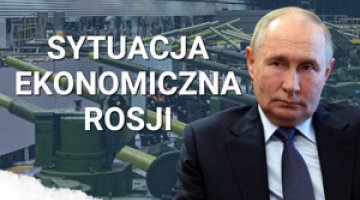Negotiations in Riyadh: unclear agreements, slim prospects for implementation
Between 23 and 25 March, a US delegation led by Michael Anton, Director of Policy Planning at the State Department, and Andrew Peek, Director for Europe and Eurasia at the National Security Council, held talks in the Saudi capital, Riyadh, on the technical details of a ceasefire in Ukraine. They met first with the Ukrainian delegation on 23 March, then with the Russian negotiators on 24 March, followed by a second meeting with the Ukrainian delegation on 25 March. The latter was headed by Defence Minister Rustem Umerov and included Deputy Foreign Minister Oleksandr Karasevych, Deputy Heads of the Presidential Office, Pavlo Palisa and Ihor Zhovkva; and Deputy Minister of Energy Mykola Kolisnyk. The Russian delegation was led by Grigory Karasin, Chairman of the Foreign Affairs Committee in the upper house of the Russian parliament, and Sergey Beseda, adviser to the FSB Director and former head of the FSB’s 5th Service, responsible for intelligence operations.
The talks resulted in the announcement of a 30-day moratorium on attacks targeting energy infrastructure. Russia pledged to halt strikes on civilian shipping in the Black Sea, provided that inspections were introduced for vessels heading to Ukrainian ports, and that Western sanctions on Russian entities involved in the export of agricultural goods were lifted. Specifically, Russia demanded the restoration of its access to the SWIFT system, the lifting of the EU’s ban on Russian ships entering its ports, and reduced insurance costs for the maritime transport of agricultural goods; the US side committed to supporting these measures. Ukrainian representatives also raised issues such as the exchange of prisoners, the release of civilians held by Russia, and the return of Ukrainian children taken to Russian territory.
These arrangements are unlikely to be implemented. They have also done little to reconcile the starkly opposed positions of Ukraine and Russia regarding the terms for ending the conflict. For Russia, they serve as a means of sustaining the Trump administration’s efforts to secure Moscow’s consent to a ceasefire and of prolonging negotiations – used by the Kremlin as a smokescreen for ongoing military operations and as leverage to extract further concessions from the United States.
Commentary
- The negotiated arrangements are highly imprecise and leave considerable room for interpretation. The agreement to halt attacks on civilian shipping in the Black Sea has little chance of being implemented, as Washington cannot meet the conditions set by Moscow. The United States does not have the authority to reconnect Russian banks to the SWIFT system, which is operated by a Belgian company; Russian entities were disconnected as a result of EU sanctions rather than those imposed by the US. Nor can Washington lift the EU’s embargo on Russian vessels entering European ports. Contrary to Russia’s complaints, it has not been blocked from access to agricultural markets. For example, in 2023–24, its grain exports were limited only by the market’s capacity and, paradoxically, by Russia’s own export restrictions.
- A ceasefire in the Black Sea is not among Ukraine’s urgent priorities, as maritime traffic to the ports of so-called Greater Odesa has continued since September 2023 despite the ongoing conflict. The new Black Sea corridor has enabled the transport of all types of goods, not only agricultural produce. Reinstating mandatory inspections of civilian vessels heading to Ukrainian ports, as demanded by Moscow, would be detrimental to Ukraine, as it would allow Russia to resume its earlier practice of deliberately slowing Ukrainian maritime trade. It also remains unclear whether the ceasefire would extend to port infrastructure, which continues to be targeted by Russian forces. President Volodymyr Zelensky has stated that the agreement covers the ports, but this has not been confirmed by the Russian side.
- Ukraine would welcome a halt to attacks on energy infrastructure, as such facilities have suffered heavy damage from regular large-scale strikes since October 2022. However, the Kremlin’s list of sites covered by the moratorium notably excludes gas extraction infrastructure, which has been the target of successful Russian strikes in recent weeks, leading to a temporary 40% drop in gas production in Ukraine. At present, both sides appear to be observing the moratorium, but Russia is likely to violate it in order to test Washington’s response and provoke Ukraine into retaliatory strikes, with the intention of then blaming it for breaching the agreement.
- Ukraine has accepted the terms of a Black Sea ceasefire that are more favourable to Russia, temporarily adopting a tactical approach of acquiescing to US negotiating proposals. In doing so, it seeks to demonstrate its commitment to the Trump administration’s peace efforts while highlighting the ineffectiveness of talks with Russia – portraying it as an uncompromising party that continues to make new demands. President Zelensky has emphasised that Russia rejected a proposal for an unconditional ceasefire, put forward during the talks in Jeddah on 11 March – a move intended to reveal Russia’s true intentions. Ukraine hopes that Russia’s stalling tactics will significantly influence Washington’s approach, eventually prompting the US to revise its position in favour of ending the war on Ukraine’s terms.
- Russia has formulated its conditions in a way that will allow it to later claim they have not been met, providing a pretext to evade implementation of the agreed terms. The vague wording and absence of verification mechanisms suggest that Russia views both the negotiation process and the resulting agreements in purely instrumental terms. Its objective is not to end the war at its current stage, but to prolong talks in order to showcase its supposedly ‘peaceful’ intentions – particularly to audiences in the Global South and to Western opponents of the conflict with Russia. At the same time, the Kremlin continues to seek a military outcome that would break Ukrainian resistance and topple the current government in Kyiv. It is using the negotiation process to exacerbate differences and divisions between the Trump administration, on one side, and the Ukrainian government and pro-Ukrainian European countries on the other.




